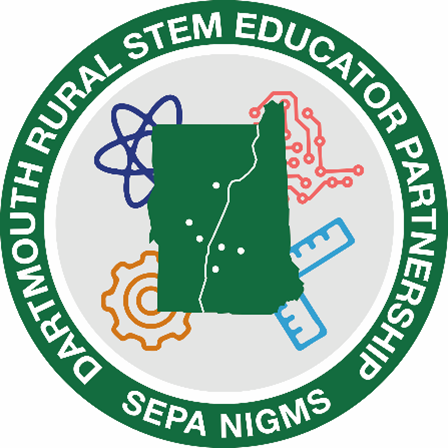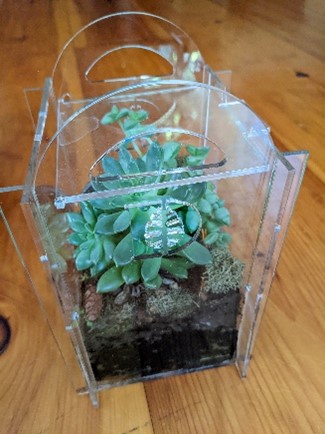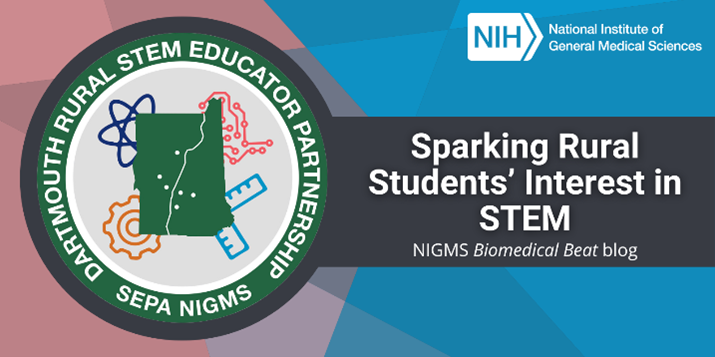When asked why he leads the NIGMS-supported Science Education Partnership Award (SEPA) program at Dartmouth College in Hanover, New Hampshire, Roger D. Sloboda, Ph.D., the Ira Allen Eastman Professor of Biological Sciences (emeritus), shares a story. Several years ago, he learned of a public-school science teacher in rural New Hampshire who had a very limited budget for classroom equipment. With her annual budget, she’d been able to buy a single stainless-steel laboratory cart. “Next year, I hope to buy a piece of equipment to put on it,” she said. A short time later, Dr. Sloboda attended a scientific meeting and talked to a student from a private school in Washington, D.C., who was presenting a poster about his research project studying the effects of household chemicals on zebrafish development. Dr. Sloboda asked the student how he was able to work with zebrafish, because they require specialized, expensive facilities. The student responded that his school maintained its own zebrafish facility.

“That’s the disparity of education in our country. Some students have a stainless-steel cart, and others have a functioning and well-equipped zebrafish facility,” says Dr. Sloboda. He hopes that the Dartmouth Rural STEM Educator Partnership can help lessen this disparity by bringing hands-on STEM projects and the resources needed to complete them to under-resourced, rural middle schools.
Teaching With Terrariums
The Dartmouth Rural STEM Educator Partnership consists of faculty and graduate students from Dartmouth, educators from the Montshire Museum of Science, and teachers from four rural middle schools in Vermont and New Hampshire. Each fall, the partnership develops a new STEM education project that addresses a need the teachers have identified. For the 2021–2022 school year, the partnership created a terrarium project. Students were able to design experiments around plant growth, using tools they controlled through computer coding to collect data and determine if their data supported or refuted their hypotheses.

Faculty and graduate students at Dartmouth designed plexiglass terrariums that middle schoolers could easily assemble, experimented with different species of plants to determine which would be best for the students to work with, developed the necessary data collection tools, and created teaching materials for seven lessons, which are available for free on the partnership’s website. Then, they distributed the project supplies to five 7th-grade classrooms. The Dartmouth graduate students helped the classes set up the microcomputers that managed data collection from the terrariums, shared their personal journeys in science, and answered the classes’ questions.
Mentor Insights

“It was really rewarding to see how excited the kids got learning to program the computers,” says Sara Vannah, a physics and astronomy Ph.D. student at Dartmouth. Sara joined the Dartmouth Rural STEM Educator Partnership as a graduate-student mentor because of her strong interest in science education and communication. She appreciates how the program illuminated the challenges that science educators face, especially in under-resourced schools.

Another mentor, Anneka Johnson, a cancer biology Ph.D. student at Dartmouth, was excited to share her experience in science with middle schoolers because she remembers how out of reach science felt to her at that age. Growing up in a small town in Wisconsin, Anneka thought being a scientist was something that people did in movies, but not a career option in the real world. “I think it’s really important to help young kids understand that they can be scientists and that real people use science to understand the world and invent things that will improve people’s lives,” she says.
According to one educator who participated in the terrarium project, different kids found success with different lessons: “Some really enjoyed the tech piece and were most fascinated by the coding. Others really enjoyed setting up the terrariums, and still others were really engaged when trying to develop their lab variables and procedures.”
In the future, the Dartmouth Rural STEM Educator Partnership hopes to not only support rural middle schoolers in their classrooms but also bring them to Dartmouth on field trips (a component of the project not yet set in motion due to the pandemic) where they can see science labs in action and observe student life on a college campus.
The Dartmouth Rural STEM Educator Partnership is supported through the NIGMS SEPA program by grant R25GM129820.
Other Posts You May Like
- Understanding Signaling Through Cell Membranes: Q&A With Chrystal Starbird
- Bil Clemons: Following Scientific Curiosity
- From Science Fair to Science Lab: Q&A With Chelsey Spriggs
- Haley Bridgewater: Taking the Sting Out of Vaccines
- Investigating the Inner Workings of Ion Channels With Sudha Chakrapani







